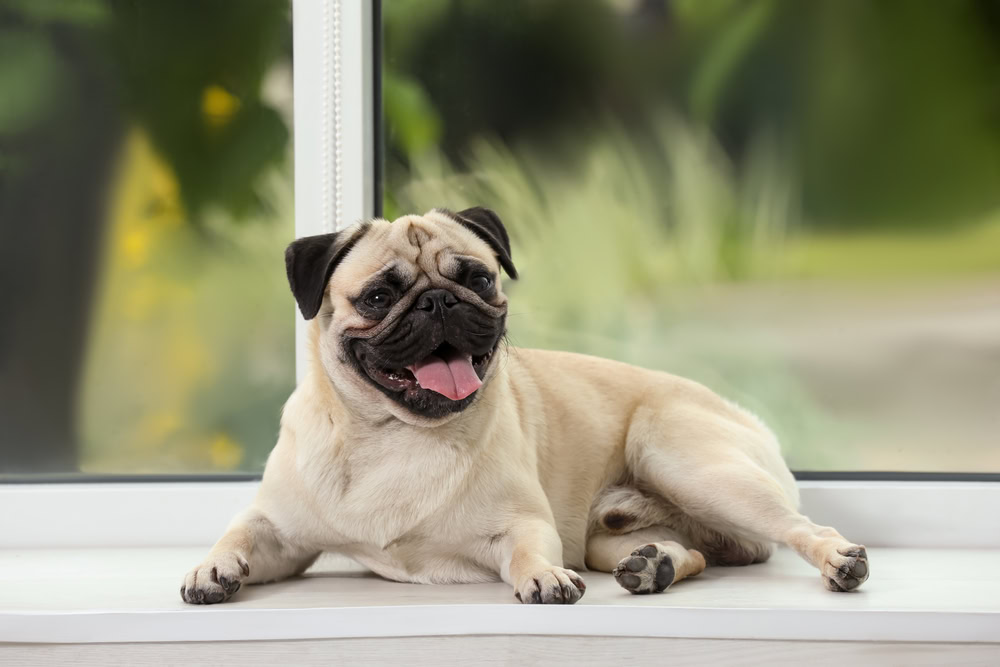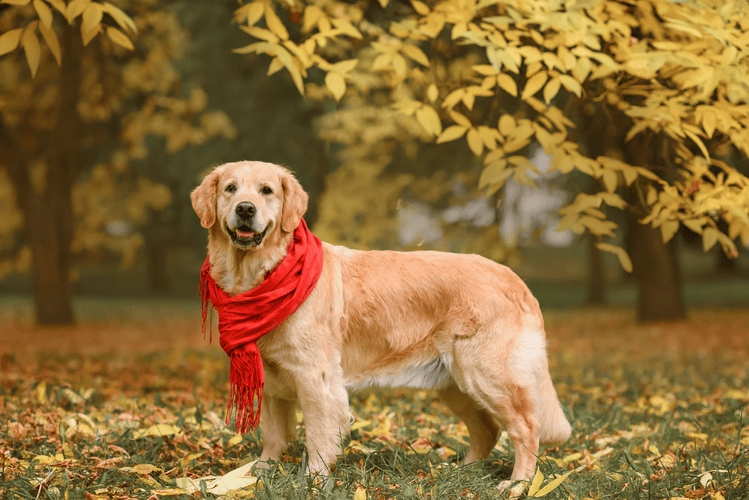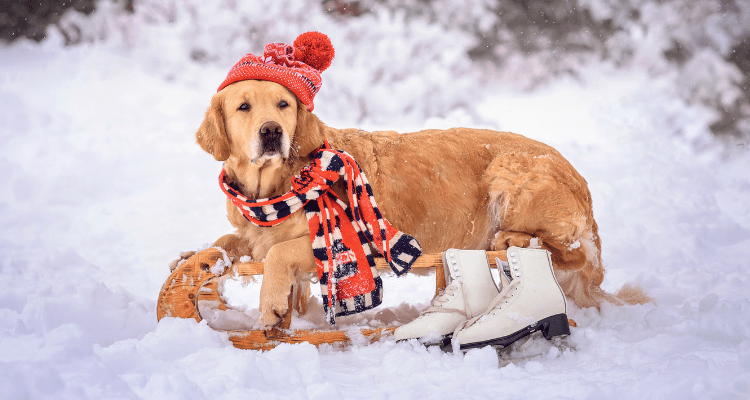If you have pet allergies but want to get a Pug, the question as to whether they are hypoallergenic often arises. The short answer is no, Pugs are not hypoallergenic. Pugs, like all dogs, produce dander, urine and saliva, which can trigger allergic reactions in sensitive individuals. Some breeds are given the title “hypoallergenic” as they shed less. Pugs unfortunately do shed a lot! However, don’t lose hope just yet! With the right knowledge and precautions, you can still enjoy the companionship of a Pug while managing your allergies.

The Science Behind Pet Allergies
Pet allergies are a common issue for many people. They occur when the immune system overreacts to certain proteins found in a dog’s skin cells, urine, and saliva. This overreaction is what causes the allergic reaction.
Our immune system is designed to protect us from harmful substances like bacteria and viruses. However, in some individuals, the immune system identifies these harmless pet proteins as dangerous invaders and releases chemicals such as histamine, which results in allergy symptoms.
Symptoms of pet allergies can range from mild to severe and include sneezing, runny or stuffy nose, red, itchy, or teary eyes, wheezing, coughing, or even skin rashes. These symptoms can be particularly uncomfortable and disruptive, affecting an individual’s quality of life.

Pugs and Their Relationship with Allergens
When it comes to dog breeds and allergens, Pugs are known to be fairly high shedders. They possess a smooth, short coat that sheds throughout the year, which means more hair in the environment; this hair then spreads dog allergens around their environment. The constant shedding of hair can keep allergen levels high in your home.
Dander, or microscopic flakes of skin shed by dogs, cats, birds, and other animals with fur or feathers, is what partially causes allergic reactions. Dander can be airborne, and due to its tiny size, it can easily be inhaled, triggering allergic reactions.
However, it’s essential to note that individual reactions to dog breeds can vary widely. Some people might have stronger reactions to certain breeds, while others may not react at all. It often depends on the person’s specific allergic sensitivity. It is recommended that you spend time with the individual dog that you are considering adopting to see if they trigger your allergies.
Despite this, Pugs are known for their loving and affectionate nature. Their charming personalities often make them irresistible pets, making it essential for potential Pug owners with allergies to understand and manage their pet allergies effectively.

Living with Pugs Despite Allergies: A Comprehensive Guide
Just because you have pet allergies, doesn’t mean you can’t live with a Pug, especially if your allergies are only mild. It’s important to talk to your doctor about allergy medications or shots to help you manage your allergies. However, there are some other things you can do around the home to help cut down on allergens as well.

Regular Grooming
Regular grooming is not just about keeping your Pug looking their best; it’s also a critical part of managing allergens. Grooming can significantly reduce the amount of dander in the environment, which in turn can help alleviate allergic reactions.
Weekly brushing is a must for Pugs but the more frequent the better for those with allergies. This helps remove loose hair that would otherwise end up around your home. The less loose hair there is, the fewer allergens there are floating around. When brushing, it’s best to do it outside if possible, to prevent allergens from spreading in your home. Ideally have someone who does not have allergies do the grooming.
Bathing your Pug monthly with a dog shampoo can also help reduce allergens. If your pug has skin issues, speak to your veterinarian about which shampoos and conditioners to use and how frequently to wash them.
Hepper Oatmeal Shampoo for Dogs, Cats and Other…
- Only Natural Pet Shampoo – Our vegan, plant-based formulation is made with safe and natural…
- No Soap – A cat and dog wash free from soaps, glutens, dyes, DEA, sulfates and phthalates means it’s…
- Colloidal Oatmeal – Formula soothes and nourishes dry, irritated skin, providing itchy skin relief…
Although no pet is completely hypoallergenic, regular bathing can help reduce the amount of dander and other allergens in their fur and the air. We highly recommend Hepper’s Oatmeal Pet Shampoo for this job!
At PangoVet, we’ve admired Hepper for many years, and decided to take a controlling ownership interest so that we could benefit from the outstanding designs of this cool cat company!
Maintain a Clean Environment
Cleaning is another crucial step in controlling allergens. Regular cleaning with enzyme cleaners can reduce the number of allergens in your environment, making it easier for you or any family members with allergies.
Vacuuming regularly with a HEPA-filtered vacuum cleaner can be particularly effective. These types of vacuums are designed to capture tiny particles like dander, dust mites, and pollen. Vacuum all areas where your Pug spends time, including carpets, rugs, and upholstery. Smooth floors such as wood or tile are easier to clean thoroughly. Consider replacing carpet in your home with another surface. Cleaning with water aerosolizes less allergens than dry cleaning, so consider mopping over sweeping.
Washing bedding frequently is also important. This includes clothes, your bedding and your Pug’s. Allergens can accumulate on these surfaces over time, so regular washing with detergent and high temperatures can help keep allergen levels down.

Limit Your Exposure
Areas where the pug doesn’t spend time will have a lower level of allergens. Consider keeping your Pug out of the bedroom as that is where you probably spend 8 hours a night. Wash your hands after playing with your Pug and avoid touching your face until your hands are cleaned.
Air purifiers can be a valuable tool in managing pet allergies. These devices work by filtering the air in your home, removing allergens and other particles.
Look for an air purifier specifically designed to remove pet dander from the air. These models typically have HEPA filters, which can capture tiny particles like dander. Place the air purifier in areas where you spend the most time or where your Pug tends to hang out.
Remember, while air purifiers can help reduce allergens in the air, they should be used as part of a comprehensive allergy management plan. They are most effective when used in conjunction with regular grooming and cleaning.

Breed Alternatives for Allergy Sufferers
If you have severe allergies and you’ve decided that a Pug is just not the right breed for you, there are other dogs you can consider instead.
Low Shedding Breeds
If you’re severely allergic but still want a dog, consider low-shedding breeds. Breeds like the Poodle, Shih Tzu, and Bichon Frise.

Hairless Breeds
Hairless breeds, such as the Xoloitzcuintli or Chinese Crested, have less hair to shed. They can still produce some dander through their shed skin, and allergens in saliva, and urine. These might still be suitable alternatives if you’re allergic to dogs though.

Conclusion
While Pugs may not be hypoallergenic, they are still lovable and charming companions. Allergies shouldn’t always deter you from enjoying the company of these adorable creatures but it may require some extra work as well as doctor visits for yourself. While all kinds of dogs produce allergens, choosing a low-shedding dog can be a better option for people with allergies.
Featured Image Credit: New Africa, Shutterstock





